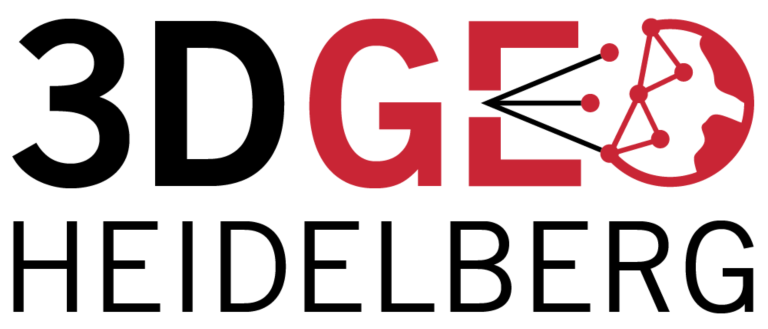Category: Lidar Group
-
3D data acquisition in the Ötztal Alps – Exploring 3D GIScience on the “Monster of Rock”
As part of the practical field training “3D Geodatenerfassung im Hochgebirge (Ötztal), 31 July – 06 August”, the rock glacier “Äußeres Hochebenenkar” (42 ha), located in the Ötztal Alps in an elevation of 2,630-2,800 m a.s.l., was explored by 16 students under the direction of Bernhard Höfle, Stefan Hecht and Martin Hämmerle. With the help…
-
3D-TAIGER Summer School 2016 in Heidelberg
From 5-7 September 2016 the GIScience Heidelberg Group hosted a summer school within the collaboration and exchange project 3D-TAIGER (’Multi-Source 3D Geoinformation Extraction for Improved Management of Forest and Natural Hazards – Collaboration between TAIwan and GERmany’). The summer school is a follow-up of the kickoff meeting in Tainan in April this year. The first…
-
Full-Waveform Airborne Laser Scanning in Vegetation Studies—A Review of Point Cloud and Waveform Features for Tree Species Classification
In recent years, small-footprint full-waveform airborne laser scanning has become readily available and established for vegetation studies in the fields of forestry, agriculture and urban studies. Independent of the field of application and the derived final product, each study uses features to classify a target object and to assess its characteristics (e.g., tree species). These…
-
Workshop on Multi-Source 3D Geoinformation Extraction for Improved Management of Forest and Natural Hazards (5 Sep 2016, 9-17h)
Time: Monday, 5 September 2016, 09:00 – 17:00h Venue: Seminar Room 5.104, Im Neuenheimer Feld 205, Mathematikon No fees: Attendance of the scientific program is without costs. Objective and Scope The main objective of this public workshop is to bring together experts from Geosciences and 3D Earth observation / Geomatics, from academia and industry, as…
-
Using participatory geographic approaches for urban flood risk in Santiago de Chile: Insights from a governance analysis
Studies based on information acquired by participative geographic approaches have sought to cope with emergency situations and disasters such as floods. However, the impact of these approaches to flood risk governance systems in order to understand these types of events as a complete risk cycle is still not clear. In a recent paper, we analyse…
-
Video online – Multidimensional Perceptibility of Cultural Heritage (MUSIEKE)
The official video of the research project “Multidimensional Perceptibility of Cultural Heritage (MUSIEKE)” has been released and can be watched here: https://youtu.be/s3-4Rzye22U The project MUSIEKE aims at analyzing interrelations between perceptions and experiences of cultural heritage: in (1) museum environments, in (2) urban spaces and their spatio-temporal entanglements with the surrounding (cultural) landscape and in…
-
Impressions from ISPRS Congress 2016 in Prague
As we mentioned earlier, we contributed four papers to the ISPRS congress and participated in the CATCON contest for brilliant Computer Assisted Teaching tools. Our new LiDAR Simulator called HELIOS developed by Sebastian Bechtold received a lot of attention. You can also find us in this video of congress day 3. Our young researchers Katharina,…
-
Four contributions from GIScience Heidelberg at the ISPRS Congress in Prague
The LiDAR Research Group (LRG) of GIScience Heidelberg is contributing novel approaches for geological outcrop characterization, LiDAR simulation, tree classification as well as education in close-range sensing. You are kindly invited to visit our presentations at the ISPRS Congress 2016 in Prague. Furthermore our new HELIOS LiDAR Simulator will participate in the CATCON contest for…
-
Local-scale flood mapping on vegetated floodplains from radiometrically calibrated airborne LiDAR dat
Knowledge about the magnitude of localised flooding of riverine areas is crucial for appropriate land management and administration at regional and local levels. However, detection and delineation of localised flooding with remote sensing techniques are often hampered on floodplains by the presence of herbaceous vegetation. To address this problem, our very recent paper presents the…
-
New publication: ‘Terrestrial and unmanned aerial system imagery for deriving photogrammetric three-dimensional point clouds and volume models of mass wasting sites.’
The results of a study dealing with photogrammetric 3D geodata of mass wasting sites conducted at the GIScience were considered to be worth publishing in the Journal of Applied Remote Sensing: ‘Terrestrial and unmanned aerial system imagery for deriving photogrammetric three-dimensional point clouds and volume models of mass wasting sites.‘ Three-dimensional (3D) geodata of mass…
-
Report on Trail Valley Creek Research Station
The Tusaayaksat Magazine reports on the research activities at the Trail Valley Creek Research Station, Canada, where members of the LiDAR research group (Inga Beck, Sabrina Marx & Bernhard Höfle) captured in-situ data within the PermaSAR research project last summer: “Climate change research in our own backyard“, p. 58-63.
-
RNZ-Zeitungsflirt 2016 über die Geoinformatik
“Mit Geoinformatik zur knusprigen Pizza Margherita” – so lautet der Beitrag von Helen Sandbrink in der Sonderbeilage “Zeitungsflirt 2016” der Rhein-Neckar-Zeitung (RNZ) vom 10. Mai 2016. Frau Sandbrink beschreibt ihre Sicht auf die Geoinformatik, die sie durch einen Besuch am Geographischen Institut gewinnen konnte. Quelle: Rhein-Neckar-Zeitung (Nr. 107/2016), Seite 5 in der Sonderbeilage “Zeitungsflirt 2016”,…


